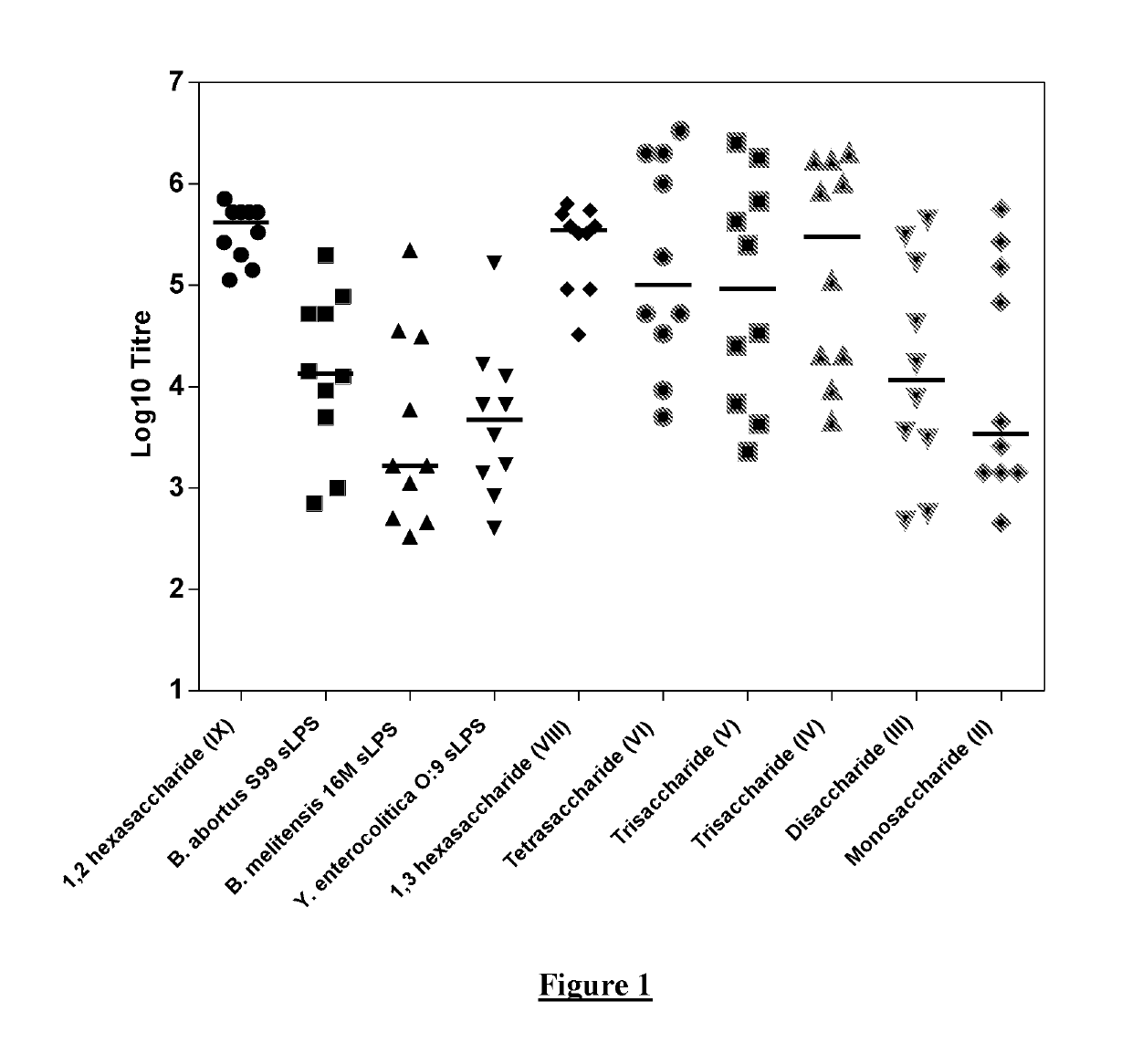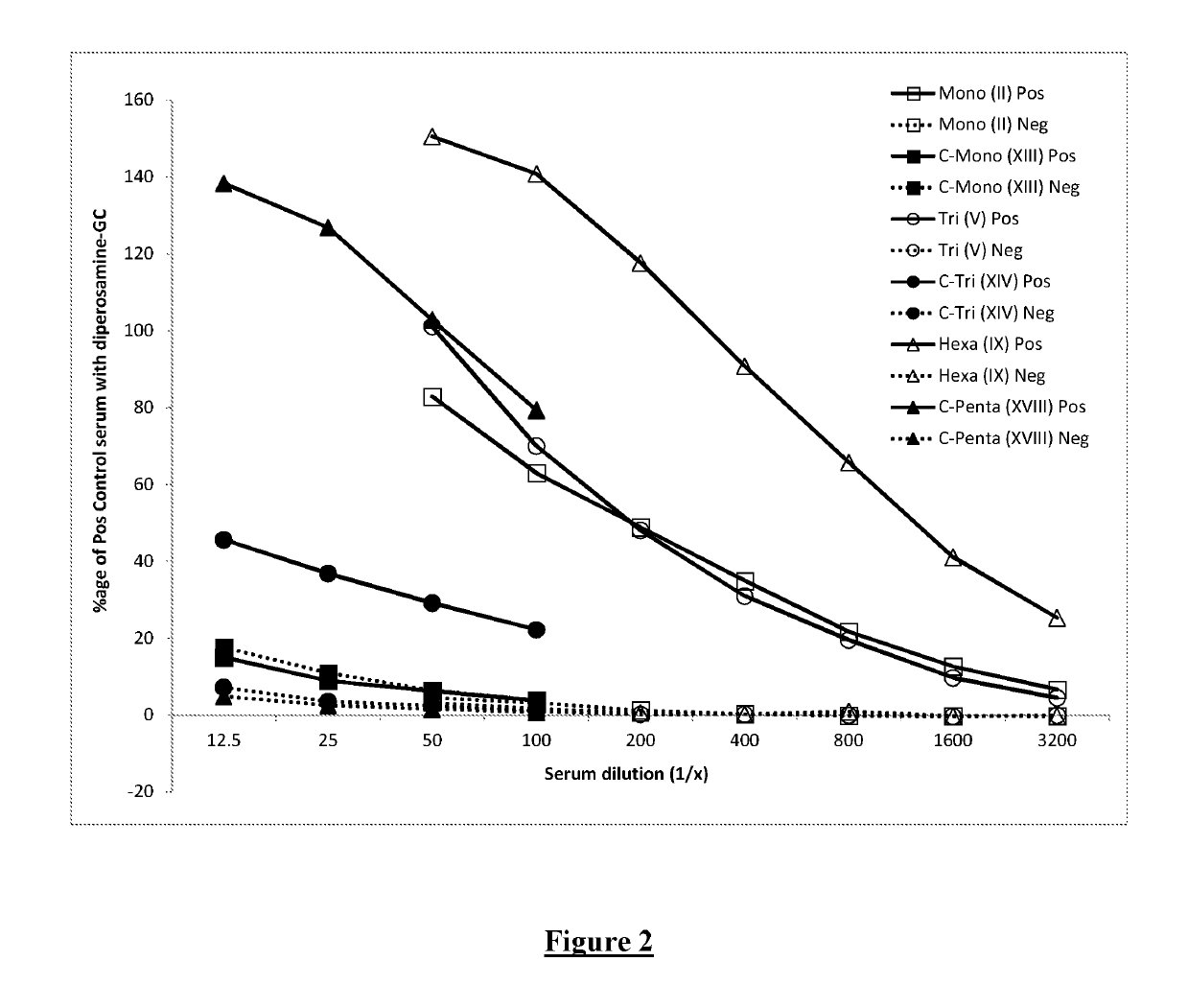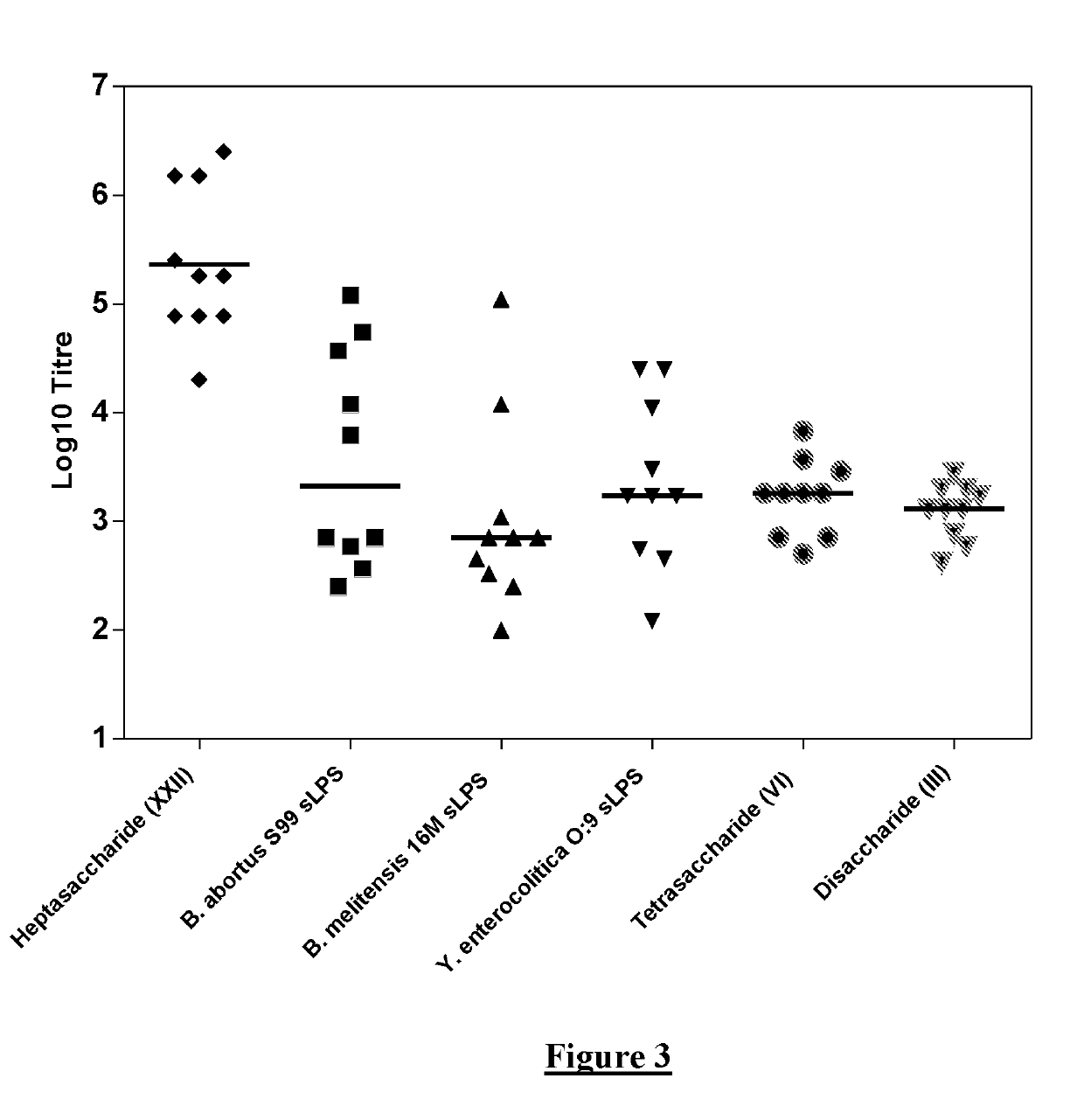Polysaccharide and methods
- Summary
- Abstract
- Description
- Claims
- Application Information
AI Technical Summary
Benefits of technology
Problems solved by technology
Method used
Image
Examples
example 1
ork to Develop a Possible Vaccine Candidate
[0128]The work disclosed in WO2014 / 170681 and in (Ganesh et al (2014) Journal of the American Chemical Society 136:16260-16269) and (McGiven et al (2015) Journal of Clinical Microbiology 53:1204-1210) suggested that it may be possible to develop a vaccine formed by chains of 4,6-dideoxy-4-formamido-α-D-mannopyranose units which are exclusively C1-C2 linked. This is because the shorter oligosaccharides described in those publications (such as di- or tetra-saccharides), that contain a single C1-C3 link and a limited number of C1-C2 links, were observed to be less likely to bind to antibodies induced by polysaccharides that are exclusively C1-C2 linked. It was suggested that vaccination with an exclusively C1-C2 linked polysaccharide would then be capable of discrimination from an animal infected with an organism having an OPS where C1-C3 links are present.
[0129]Therefore, initial experiments were carried out in which mice were immunised with ...
example 2
tion of Possible Epitope at Non-Reducing End of 4,6-dideoxy-4-formamido-α-D-mannopyranose Chain
[0150]Since the inventors were observing binding of antibodies raised against Structure I to even a monosaccharide antigen (Structure II), it was suspected that the terminal sugar provided an epitope for antibody binding (referred to herein as a “terminal epitope”). To investigate whether the binding potential of a single perosamine (4,6-dideoxy-4-formamido-α-D-mannopyranose) was dependent upon the specific structural features possessed only by the terminal perosamine (for example, the hydroxyls located on both C2 and C3), various synthetic oligosaccharides comprising a “cap” structure at the non-reducing end were prepared as shown below in Table 3. Some oligosaccharides were linked to BSA using squarate chemistry and some via DSG, as above.
TABLE 3further synthetic oligosaccharide BSA conjugates, providing “cap” structures on the terminal perosaminePattern ofStructuresugars / numberlinkagesS...
example 3
of OPS Terminal End Sugar to Disrupt Terminal Epitope
[0164]The inventors adapted the disclosure of Stefanetti et al. (Stefanetti et al (2014) Vaccine 32:6122-6129) to disrupt the structure of the terminal sugar in Brucella OPS. These workers subjected the OPS of Salmonella Typhimurium to mild oxidation with sodium metaperiodate. This opens the rhamnose ring to generate aldehydes, which can then be conjugated to the amines on CRM197 (genetically detoxified Diphtheria toxin) via reductive amination. The rhamnose sugar in that method is an internal sugar, rather than a terminal sugar. Therefore, the oxidation is possible because the polymer is linked via C1 and C4, so that the cis vicinal hydroxyl groups on C2 and C3 are available for oxidation. In the case of Brucella, the perosamines have a D-rhamnose framework (like D-mannose, but lacking OH on C6) but, because each non-terminal rhamnose in Brucella OPS is linked to its terminal end neighbour through either C2 or C3, the only rhamno...
PUM
| Property | Measurement | Unit |
|---|---|---|
| Amphiphilic | aaaaa | aaaaa |
| Structure | aaaaa | aaaaa |
Abstract
Description
Claims
Application Information
 Login to View More
Login to View More - R&D
- Intellectual Property
- Life Sciences
- Materials
- Tech Scout
- Unparalleled Data Quality
- Higher Quality Content
- 60% Fewer Hallucinations
Browse by: Latest US Patents, China's latest patents, Technical Efficacy Thesaurus, Application Domain, Technology Topic, Popular Technical Reports.
© 2025 PatSnap. All rights reserved.Legal|Privacy policy|Modern Slavery Act Transparency Statement|Sitemap|About US| Contact US: help@patsnap.com



